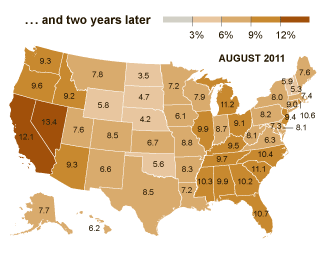Dollar shortage drives down offshore Yuan
WSJ reports:
Until this week, the Hong Kong-traded Chinese Yuan (offshore market) had remained broadly in line with the official yuan (onshore) trading range. But market turmoil last Thursday and Friday prompted the Hong Kong price to slump at one point to a discount of as much as 2.5% to the mainland yuan, the biggest gap since China began relaxing its currency restrictions about a year ago.
The drop took place mostly in Hong Kong, a Chinese city that operates under its own set of laws and the only place where the yuan can be traded outside the Chinese mainland. Chinese officials over the past year have transformed the city into a laboratory for yuan liberalization, allowing everything from the issuance of yuan-denominated bonds to yuan-trade settlement to yuan accounts for individual investors.
The moves fly in the face of currency-market conventional wisdom, which holds that the yuan is set to rise against the U.S. dollar as China soaks up capital and trade flows. The surprising turn of events may evoke long-held fears in Beijing of financial turmoil among those wary of opening up the country's capital account. An entrenched fear in Beijing is that the international capital flows that built up Asian economies before laying them low in 1997, could do the same to China. That lies behind the complicated web of controls Beijing has built to control capital flowing in and out of the country.
China learned another lesson during the more recent global financial crisis. It found that a shortage of U.S. dollar credit globally affected its own export sector's ability to sell goods. Partly to fix that it decided the yuan need to be accepted internationally, and to make that happen it would need to open up its financial markets.
Copper signals another global slowdown
Copper has been a good predictor for the health of the global economy. It is sometimes called Dr. Copper by fans because it’s seen as a better prognosticator of the economy than academics with Ph.D.s.
Copper price dropped 22% in September, and this was coincided with a nearly 10% fall in the Shanghai stock market since the end of July, and a 21% drop in Hong Kong’s Hang Seng Index.
More headwinds ahead…
Mike Mayo: the US has become Japan-like
The Fed’s Operation Twist pushed 10-y US Treasurys solidly below 2%, crushing Banks’ profit margin. Mike Mayo says this will be the worst decade for the US banks since 1930s.
Operation Twist
The Fed intends by the end of June 2012 to purchase $400 billion of Treasury securities with remaining maturities between six years and 30 years and to sell bonds maturing in three years or less.
Watch this analysis from CNBC.
Long term interest rate moved sharply after the news: 30-year Treasurys now is below 3%, lower than the market panic period after Lehman’s collapse.



![[YUAN]](https://si.wsj.net/public/resources/images/AI-BN614_YUAN_NS_20110925221202.jpg)


